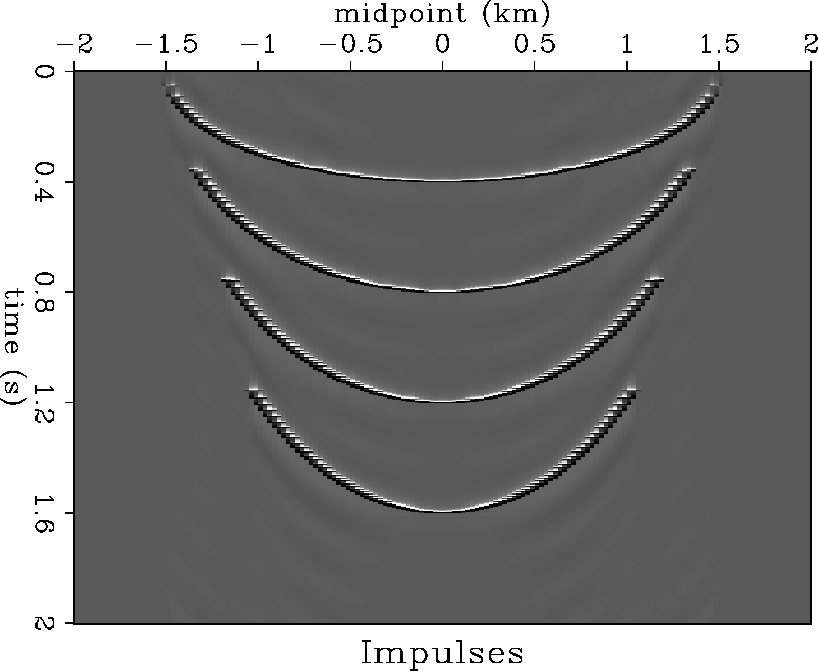![[*]](http://sepwww.stanford.edu/latex2html/cross_ref_motif.gif) shows the DMO
response of several impulses corrected with anti-aliasing triangles.
shows the DMO
response of several impulses corrected with anti-aliasing triangles.
Applying DMO in time slices assures that the operator will not introduce spatial aliasing in the data. However, the spatial spreading from a time slice to the next must never exceed the bin spacing in order to avoid temporal aliasing Hale (1991). The previous condition is not verified for the gentle dips of the operator.
A technique described by Claerbout 1992
prevents operator aliasing. The method consists of
the convolution of the operator with triangles whose width
depends on the dip of the operator. The convolution is applied
horizontally in the time slices. Figure ![[*]](http://sepwww.stanford.edu/latex2html/cross_ref_motif.gif) shows the DMO
response of several impulses corrected with anti-aliasing triangles.
shows the DMO
response of several impulses corrected with anti-aliasing triangles.
|
res
Figure 6 Impulse responses of DMO applied to time slices. The anti aliasing triangles are wide at gentle dips and shrink towards the steepest dips. |  |
In three dimensions, the triangles cannot be obtained by Clearbout's double integration technique and thus, they are pre-computed and convolved explicitly.